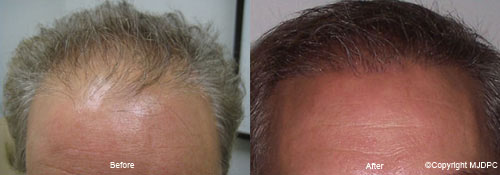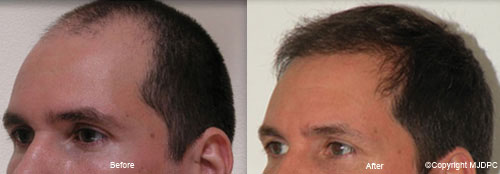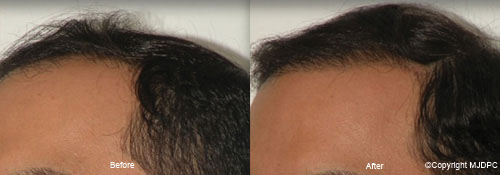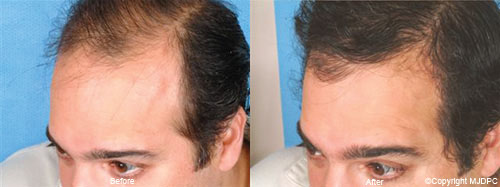Our doctor performs NeoGraft follicular hair extraction for patients in our region to provide a natural-looking hairline without linear scarring, staples or sutures.

Causes of hair loss
Frequent shampooing, the wearing of hats and poor circulation are not the cause of hair loss.
Androgenetic alopecia, or pattern baldness, is the leading cause of hair loss in men and women. In this condition, hormones combined with a hereditary predisposition produce thinning hair and pattern baldness. Less common causes of hair loss include high fever, severe infection, diet, certain medications, birth control pills, thyroid disease, childbirth, and cancer treatments. During the consultation, the cause of your hair loss will be evaluated, followed by a discussion of available treatment options. Male pattern baldness usually begins with a receding hairline and thinning at the crown and continues to progress over a lifetime. Female pattern baldness usually consists of thinning across the top of the scalp with preservation of the frontal hairline. Although the ultimate degree of baldness cannot be accurately predicted, the age of onset and the family history are important factors.

Restoring lost hair
Advanced NeoGraft follicular-unit hair extraction provides the most natural-looking, permanent solution for those who are bald or have thinning hair. “NeoGraft Follicular-Unit Extraction and Implantation” is a method by which hair follicles are extracted and redistributed in a manner which duplicates how hairs naturally grow from the scalp.
Topical and oral medications may benefit some people with early to moderate hair loss and may also be combined with follicular-unit micrografting. The use of medications to stop or slow down the hair loss process can be discussed during your consultation. Hair pieces, wigs or weaves are difficult to maintain and may present an unnatural appearance. While these solutions are acceptable for some people, hair transplantation using follicular-unit micrografts can provide a more natural look, permanently.

What is Micro-Hair Transplant surgery like?
Most hair transplant procedures are performed on an out-patient basis, using local or twilight anesthesia. Patients comfortably relax, watch DVDs, listen to music or nap during their procedure, which takes several hours to complete.
Follicular-unit micrografting is a procedure during which literally thousands of follicles are redistributed into the thinning or balding areas. Each micrograft contains a single “follicular-unit” consisting of one to three (or rarely, four) hair follicles. Follicular-unit grafts are then carefully implanted into the bald or thinning “recipient” areas. Meticulous artistic and technical skill is required to design an appropriate hairline, as well as ensure the appropriate angle, orientation and position of each transplanted hair. Follicular-unit micrografting creates a result that defies detection and is never, ever “pluggy.”
Will a hair transplant work for you?
While age is not a barrier to having hair transplantation, a conservative approach is indicated to produce results which appear natural for the rest of your life. You shouldn’t wait until your hair loss is extensive before beginning a hair restoration regime.
The ideal candidate will have:
- Dense growing hair in the donor sites.
- Realistic expectations of what the results will be.
Note: One’s individual hair characteristics such as color, curl and coarseness can affect the apparent density of the transplanted hair. This is discussed during the consultation.

Following NeoGraft Follicular-Unit Extraction
After our doctor performs your NeoGraft procedure, most people do not have any significant discomfort. Some itching and swelling can occur but is generally mild. With NeoGraft follicular-unit hair extraction you can resume normal activities in just a few days, unlike the strip excision method which could take weeks. Crusting and scabbing of the transplanted areas last about a week.
The transplanted hair falls out in about two weeks and generally begins to grow again in about three months. Once it has grown in, the next session can be performed. The number of sessions required to fill in a given area depends on the extent of the hair loss and the density which is desired. For most people, this means between one and three sessions.
Transplanted hair lives and grows indefinitely. Once the transplant procedures are complete, no further treatments are necessary. The hair can be styled any way the person desires. Although hair transplantation is a substantial investment, the results are considered permanent and may be less expensive than other hair loss treatments when factored over a lifetime. The improvement in self-image and confidence is well worth the cost for most people.